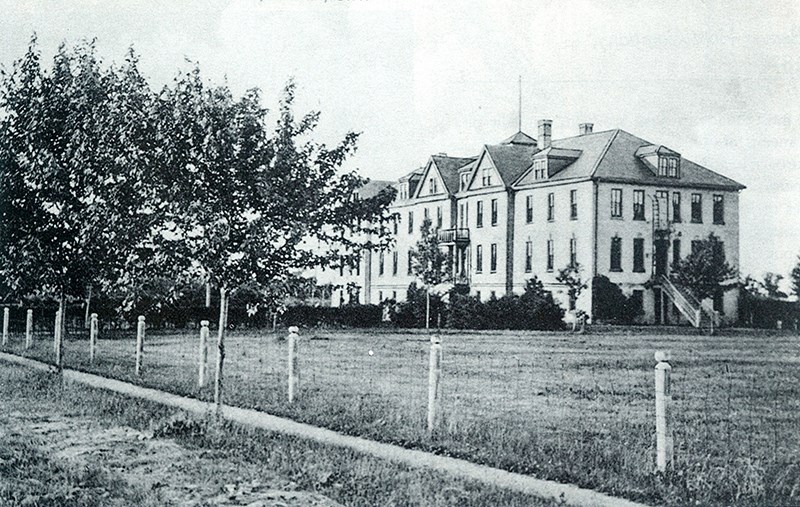Phil Egan
Generations of students were warned they would wind up there if they didn’t buckle down to their schoolwork.
The House of Refuge was built in 1889 by the County of Lambton on the east side of East Street, on Sarnia’s eastern border. It was a large, four-storey, white brick building located about where the East Street firehall and Jackson Pool are today.
The building, farm and orchard covered 60 acres.
The House of Refuge took in the destitute, feeble-minded, elderly and infirm, as well as single women from homes, jails and hospitals. In return for lodging, they had to cook, clean and work the farm, which supplied food and brought in revenue.
The farm included cows, chickens, pigs and a team of horses. Residents also tended a vegetable garden and orchard. Inside was a dairy with a separator in which milk was skimmed and cream churned into butter.
Farmers from “down the London Road” would help residents with grain threshing and silo filling.
Sarnia’s Poor House, as many knew it, was airy and spacious. Indeed, it was considered one of the finest in Ontario. The ground floor featured a sitting room and smoking room for men, dining rooms, a kitchen, laundry and storeroom with walk-in refrigerator.
A large flight of exterior stairs led up to the main floor. Here, a spacious central corridor led to a combined office and boardroom, off one side. Opposite was another sitting room. The hall led back to the Superintendent’s apartment, which covered one entire wing at the rear of the building.
Above the main floor was another large sitting room where residents could entertain friends and family. The rest of the upper floors had bedrooms to the north end for men, and women’s bedrooms, staff rooms and a chapel to the south.
The institution could accommodate 50 men and 12 women.
Ontario provided grants to counties to provide such facilities and by 1914 there were 71 houses of refuge housing 8,000 “inmates,” as residents were then called.
But as the inmates aged, navigating long sets of stairs became difficult and the large county homes were replaced across the province with one-storey homes, without farms. Such a site was sought in Lambton County and a location was chosen in Petrolia.
In 1951, Sarnia purchased the Poor House property. Three years later, it was demolished and the land designated for what today is Germain Park.
Well into the 1960s, gnarled pear and apple trees, survivors from the orchard, continued to produce good fruit in the northwest corner of the park.
